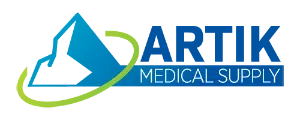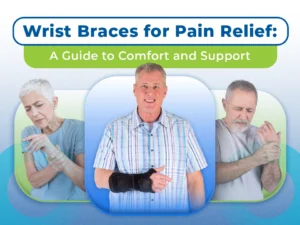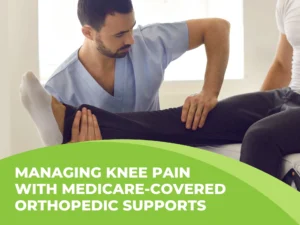Back Pain problems are a common cause of chronic pain, but they do not always respond to conventional treatment methods. Back braces may offer an effective solution for those looking for long-term support and pain relief.
According to the Agency for Healthcare Research and Quality, back pain affects roughly 50 million adults in the US. While mild, occasional pain (especially in the lower back) is common, some people suffer from chronic pain that interferes with their daily activities. This can impact your mood, affect your work performance, and reduce your quality of life if left untreated. A publication in the Global Burden of Disease determines that lower back pain is the leading cause of disability worldwide and the most common reason for missing work. If you have had back pain for more than two weeks, it’s time for medical intervention.
In some cases, pain medication, physical therapy, and other conventional treatment methods do not provide relief. Although back surgery is an option, these procedures are associated with severe risks, such as infection or nerve damage. Those who need safer and more effective pain relief might benefit from wearing a back brace for back pain.
Causes Of Back Pain
Back pain can be caused by strained muscles and ligaments, heavy lifting, a sudden twisting movement, or more severe structural conditions such as herniated or ruptured disks, sciatica, arthritis, osteoporosis, and scoliosis. There could be associated and complicating factors such as inflammation or other systemically-caused conditions. In this article, we’re primarily touching based on mechanically-caused problems that can be treated with a brace.
Common Back Pain Conditions
Chronic lower back pain is the most common type of back pain. However, several other conditions can cause back pain, such as the following:
- Muscle Injuries: Muscle sprains, strains, and tears can happen while exercising or participating in sports, at work, while playing with your children, or even doing housework. These injuries can happen any time your muscles are overworked or overstretched.
- Degenerative Disc Disease: This condition typically develops as you age, causing your spinal discs to slowly deteriorate and producing chronic back pain, numbness, or weakness.
- Scoliosis: This condition causes the spine to curve, which can potentially affect your ability to perform daily activities. An orthotic back brace is highly recommended if your spine curvature is not too severe or you have stopped growing.
- Ankylosing Spondylitis: Spinal inflammation can cause spinal bones to fuse slowly, leading to deformities.
- Spinal Fractures: These fractures typically require a brace to keep your spine stable as it heals. This will lower the risk of complications or re-fracturing.
What Is A Brace And What Does It Do?
A brace is an external device that supports your spine’s muscular and bone structures. A lumbar sacral orthosis is a brace that focuses on immobilizing and supporting your lumbar spine. It is an essential complement to successful treatment for spinal disorders.
The LSO Braces are designed and constructed after conducting extensive studies on living subjects, motion, and computerized evaluations to provide precise results for every type of user — from warehouse workers to athletes or people with sedentary lifestyles. They are also designed to stabilize chronic pain, pinched nerves, spondylolysis and spondylolisthesis, sciatica, spinal stenosis, after lumbar spinal fusion and discectomy, decompression, and laminectomy recovery. They’re also recommended for people that are overweight. Several of the LSO braces are L-Code approved for reimbursement by your insurer. Each brace is custom designed for every condition and customized to each patient.
The Construction Of A Brace
The brace’s construction depends on the need. They may be made of flexible, lightweight neoprene for chronic back pain or very stable to give maximum support as required in spinal fusion, laminectomy recovery, and stenosis. Several are customizable.
Types Of Back Braces
Depending on your diagnosis, several back bracing options could be right for you. These braces can be made of flexible materials that promote more movement or more complex and rigid materials that hold the spine in place. Semi-rigid back braces are also available. Common types of back braces include:
- Corset Braces: These flexible braces treat lower back pain, including pain caused by deformities, injuries, or degenerative disc disease, by relieving pressure on your spine.
- Hyperextension Braces: These braces treat spinal compression fractures by preventing you from bending your spine or stretching your back muscles in ways that could affect the healing process.
- Rigid Braces: These durable braces treat lower back pain by keeping the spine stable. Different rigid braces include chair-back braces, Williams braces, and Raney flexion jackets.
- Sacroiliac And Lumbosacral Belts: These braces help treat lower back pain by easing pressure on the affected area, which helps relieve potential pain points.
How Back Braces Are Helpful
- Post-surgical braces stabilize the spine when needed most to heal after surgery.
- They brace the abdomen, support posture, and take the load off the lower back.
- They make ordinary movements less painful, such as standing, getting out of bed, tying shoes, or reaching overhead.
- For those whose job requires physical effort or labor that puts stress on the back, a brace can help in returning to work as it takes the strain off of the back and helps the body to return to normal.
- Braces work if used only as needed. Wearing one too long may cause those muscles and tissues to weaken from lack of use. Therefore, intermittent use only when required is recommended.
- The jury is still out on the benefits of braces for adolescents with scoliosis. They’ve been used to attempt to straighten the spine. However, some adolescents wear them for years and still require surgery.
Opinion Regarding Back Braces For Back Pain
They are helpful when used for a limited period to alleviate pain by taking the pressure off the injured or painful areas to allow healing. Long-term use, or even preventative purposes, may exacerbate or cause pain. So intermittent use during the day is preferable and yields the most favorable results. Braces are excellent when properly prescribed, designed precisely for the patient’s condition, properly fitted, and utilized with regular and professional oversight.
Let’s get you back on track!
Up to 80% of people suffer from back pain at some point. For many, this pain goes away by itself, but others develop a chronic condition that can impact everyday living. Older adults are more likely to suffer from back problems due to joint degeneration in the spine. Osteoarthritis and spinal stenosis are the two most common causes of back pain in this age group.
In cases of mild to moderate back pain, there are options for getting some relief and protection. Back braces can help you get back into your favorite activities and prevent further pain or injuries.
Our back braces feature adjustable compression systems and are available for lower and mid-back support. If you’re not sure what product is right for you or if you’re eligible for insurance coverage, Artik Medical Supply will provide the guidance you need. We can even communicate with your doctor to determine the best back brace for you.
ARYSE METFORCE BACK For Back Pain
The ARYSE METFORCE BACK features a double-pull compression system that provides support for prophylactic protection and injury recovery.
Scope of Application:
Prophylactic back protection, disc degeneration, fibromyalgia, lordosis, lumbago, lumbar disc displacement, lumbosacral spondylosis, mild spinal kyphosis, muscular weakness, post-surgery spinal stabilization, scoliosis, spinal stenosis, sprains, and strains, among others
Features:
Double-pull compression system provides consistent support and fits comfortably under or over clothing; firm inserts provide anterior, posterior, and lateral support; removable side wings (A) and back panel (B) for a customizable level of support; universal, breathable, and comfortable
Product Materials:
Poly-thermoplastic polymer, polyester, nylon, spandex, sponge, polyoxymethylene
Directions for Use:
- Lay brace out flat with the interior view facing up
- Ensure the belt is sized appropriately by matching the label to the pleat on the belt
- To resize, remove the right and left belts from the backboard. Fold the right and left belts to the desired size and reattach them to the backboard.
- Secure back and/or side panels, if desired
- Wrap around the waist at the midsection
- Secure brace at the front of the body
- An extender is included to provide additional length to the belt if needed
- Determine if the belt is appropriately sized. If not, return to step 1
- Once the belt is appropriately sized, the belt can be cut to eliminate excess fabric. Be sure to always allow for two extra sizes when cutting
- Tighten the brace to desired comfort level using a pulley system
Bottom Line
A well-designed and fitted brace can do miracles when used as a complement to a patient’s treatment. They can help address simple problems, such as a simple lumbar strain to more complex things, such as post-surgical recovery. Braces will help the injured tissues to heal and allows patients to return to activities that would not be possible without a brace designed for their condition. And the patient may enjoy less pain in the process!







